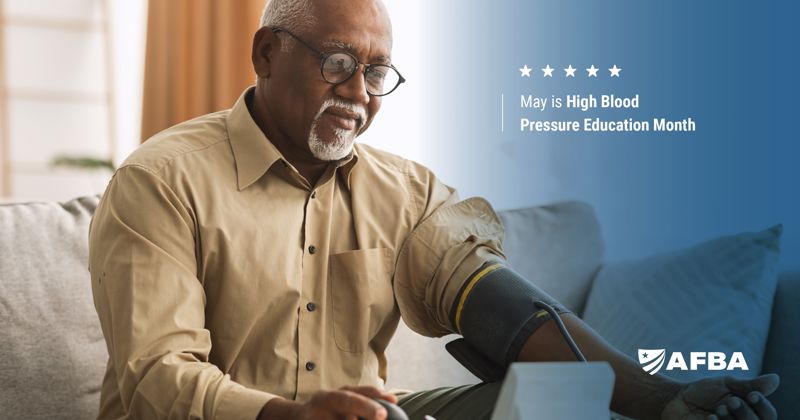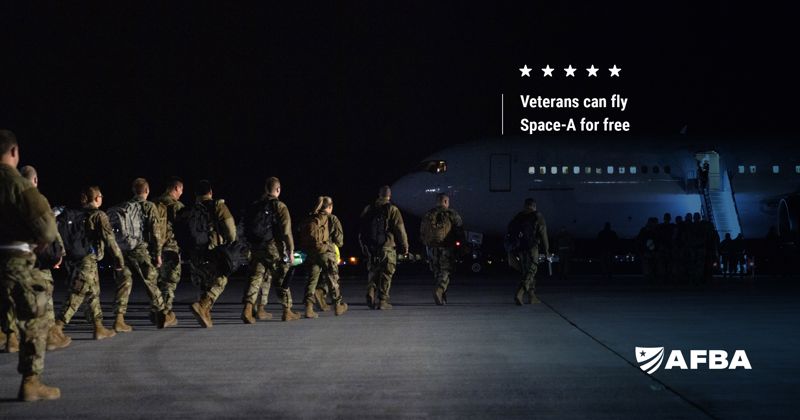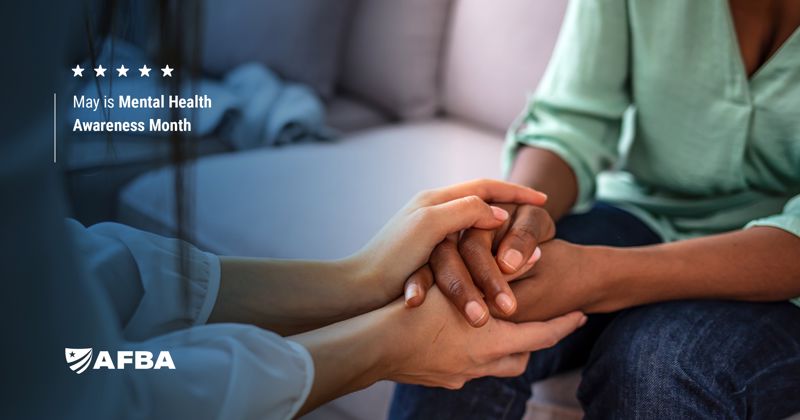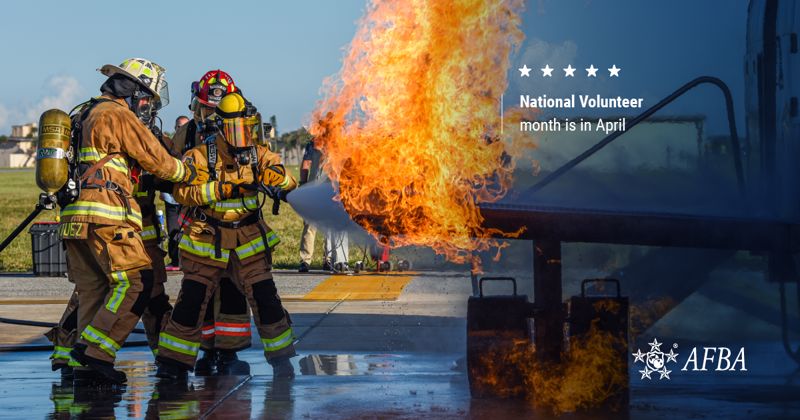Virtually everyone has used insurance at least once. It comes in a wide range of forms covering practically everything, from life and auto insurance to protection for parcels in the mail. You can even insure items like your watch or smartphone against being lost or stolen. The list may genuinely be endless.
If it can be insured, someone probably offers coverage for it. But do you regularly compare your insurance needs with the insurance you own? Are you getting what you need at the right price?
Do you need life insurance when you’re young (you do) or should you wait until you’re older? How likely do you think you are to be in an auto accident? Are you covered if you become ill or injured and need an emergency room visit or hospitalization?
Depending on the answers to questions like these, you may wish to alter your insurance plans. That’s what National Insurance Awareness Day — observed on June 28 every year — is for.
Insurance has been available for thousands of years
Some of the earliest civilizations had insurance. Somewhere between 4000 and 3000 BCE, Babylonian sea merchants would purchase bottomry contracts. These had a ship’s owner use their vessel as collateral in exchange for a loan including interest. If the ship was lost at sea or heavily damaged, the insurer would be out of luck; but if the ship returned safely in good condition, the loan and its interest would be repaid.
Marine insurance continued to develop in new forms across the world, including in ancient Greece and those who traded with them. The Romans, while they were busy revolutionizing civilization, invented life insurance.
In the 17th century, the famous and still-existing Lloyd’s of London was founded. Its founder, Edward Lloyd, would gather information about shipments from docks and compile them into the Lloyd’s List publication. While its information-gathering is a little more sophisticated than when it began, Lloyd’s List is still being updated today.
 “The appearance of the U.S. Department of Defense (DoD) visual information does not imply or constitute DoD endorsement.”
“The appearance of the U.S. Department of Defense (DoD) visual information does not imply or constitute DoD endorsement.”Why evaluate your insurance needs?
First, consider what you want to be insured. Medical bills and your automobile are some of the most popular options. Other types such as life insurance are all too often passed over.
Even if you have all the insurance you need, you may be paying too much. Rates are constantly changing, and it’s worth the time and effort to shop around for the best price.
If your life circumstances change, so should your insurance. Have you taken a new job that requires driving in dense traffic? Has your health changed? What about your marital status? Many life events warrant taking a fresh look at your insurance options.
You don’t necessarily need to shop for a new insurance provider and go through the paperwork all over again. You can talk to your current company and ask if they have other choices or promotions that might better suit your life situation. Many insurance companies allow you to customize your plan online.
Seeking out other ways to lower your insurance costs is something else to consider. Have you purchased a new car with advanced safety features? Bring it up with your auto insurance company. Are you taking care of yourself better? Maybe hitting the gym more, eating well and better controlling your weight? You could be eligible for health insurance discounts.
Look at your insurance options on National Insurance Awareness Day
It’s strongly recommended that you take the time annually to look at all your insurance options and find the best policies and rates that fit your specific needs.
Perhaps the most important thing you get from insurance is peace of mind. Knowing you’re covered in the event of an incident makes you feel better with less stress and worry — which can mean a longer lifespan and better overall health.
Father’s Day is a time to celebrate dads everywhere. But serving dads — whether military dads or first responder dads — deserve special appreciation for the uncommon challenges they face while serving, whether directly or indirectly.
The different types of serving dads
All serving dads are included in Father’s Day, but what does that term include?
Military dad and first responder dad are terms that can apply to many people. It can be a father serving in the armed forces or a first responder unit to a mother, son or daughter at home. It includes a dad supporting a serving mom. Just as the term “military family” refers to any proud kin who’s there for a related servicemember, a military dad is any type of serving dad.
 “The appearance of the U.S. Department of Defense (DoD) visual information does not imply or constitute DoD endorsement.”
“The appearance of the U.S. Department of Defense (DoD) visual information does not imply or constitute DoD endorsement.”Unique challenges serving dads face
Depending on the role of the military or first responder dad in their family, each faces unique challenges to be recognized and appreciated on Father’s Day.
Serving dads can be called to duty at any time, leaving their families for as long as their service is needed. Military dads are often required to relocate frequently, perhaps staying in one location for no more than a few months before being redeployed elsewhere. This forces them to leave shallow roots in their former place of residence to grow new ones elsewhere, which can cause stress to everyone in the family.
Being in the armed forces or a first responder unit inherently involves a degree of danger. For the serving dad, they must come to terms with the worry they may impose on those at home. The serving dad works all hours, day or night, whenever he’s called to action, which can potentially make communication with family members at home difficult.
The dad who supports his serving family member is on the other end of this. Perhaps they worry for a mother, son or daughter who serves. Maybe they, too, are facing the difficulties of keeping in touch when their servicemember could potentially be halfway around the world, or a first responder works 12-hour shifts, from evening to morning the next day.
Serving dads sacrifice uncommonly to serve their country and community. It is important to acknowledge this on Father’s Day, whether you’re a friend or family member of one.
Ideas for celebrating serving dads
What a serving dad may appreciate most differs from one to the next, but almost all would cherish a special gesture or two on Father’s Day. Here are a couple of ideas to get you started.
Write them a letter by hand
The difference between a phone call and a letter is permanence. Serving dads would almost certainly appreciate a phone call, but having a genuine letter carries a special significance. When times are toughest, the serving dad can take the time to stop, feel the paper in their hands and read the letter as many times as they wish.
Include a printed photo as an added bonus that they’ll be sure to appreciate.
Pay them a visit
If possible, go to where the serving dad is and spend some time with them.
Being a good listener can come in handy here. A serving dad to a military or first responder family member may have fewer opportunities than they’d prefer to talk about their challenges.
If you think they’d appreciate it, take them out to a favorite place of theirs, whether it’s a park, restaurant or some other special location.
However you show your appreciation on Father’s Day, do it with sincerity
Feel free to use one of these ideas or think of something special yourself. Few are the serving dads who wouldn’t feel their spirits lifted at a Father’s Day gift — especially those that carry a sincere gesture from the heart.
High blood pressure, or hypertension, affects about 65 million Americans, according to the Food and Drug Administration (FDA). Left unchecked, it can increase your risk of many different conditions, including heart disease, stroke, vision loss and kidney damage. That’s why it’s so important to be aware of your blood pressure and measure it daily.
Here, we’ll outline the why and how for effective blood pressure monitoring.
The importance of tracking your blood pressure every day
Not only should you measure your blood pressure at least twice each day, but you should also do it at the same time. Your blood pressure can change as the day progresses. The better you stick to these times, the more likely you are to get an accurate and consistent reading.
This is a good habit to get into even if you’re healthy. But for those who suffer from high blood pressure or are at risk of it, measuring it can be the difference between life and death.
 “The appearance of the U.S. Department of Defense (DoD) visual information does not imply or constitute DoD endorsement.”
“The appearance of the U.S. Department of Defense (DoD) visual information does not imply or constitute DoD endorsement.”Tips for tracking blood pressure
Not every time is appropriate to take your blood pressure. For example, you shouldn’t take your blood pressure as soon as you wake up in the morning. Instead, wait at least 30 minutes. Feel free to perform your morning routine before you take a reading.
However, it’s not a good idea to take your blood pressure immediately after breakfast, as both food and drink (especially if it contains caffeine) can affect your levels and prevent you from getting an accurate reading.
Good times to choose from might include right before you leave for work, after you come home or before bed. Ideally, for the most accurate results, you should have an empty bladder before taking your blood pressure.
While you can visit a doctor’s office to get readings, you don’t necessarily get the most accurate one there (especially if you tend to get nervous at such places). Devices that can check blood pressure, including pressure cuffs, are readily available over the counter.
There are a few key things to keep in mind when choosing:
- What can you afford? Blood pressure monitors vary significantly in price. Sometimes, insurance will cover the cost. Check before committing to a purchase.
- Does your cuff fit comfortably? It’s best to ask your doctor about this. They can take measurements and tell you exactly what size suits you.
- Can you read the display? Make sure the numbers on the screen are large enough for you to comfortably read.
- Is the device reliable? Ensure you choose a quality brand and model.
The benefits of tracking blood pressure
The primary benefit of tracking your blood pressure, even if you don’t knowingly suffer from high blood pressure, is to give yourself a chance to catch potential issues before they become big problems. If you find that your blood pressure readings are abnormally high for several days in a row, it could be a sign of illness.
If you suffer from high blood pressure or are at risk, then you also want to know if your treatment is working. There are many prescription treatments for high blood pressure and the only way to tell if they’re working is to measure the results.
Checking your blood pressure at home is a quick and easy way to stay safe
Use High Blood Pressure Education Month to learn all you can about how to better take care of yourself. To better stay in control of your health, you should know what your usual blood pressure is and check for changes. By doing this, you can ensure you’re as healthy as can be.
It is your heart we’re talking about, after all. Is there anything more vital to your well-being?
If you’re a servicemember, veteran, dependent or any other eligible type of passenger, you may qualify for free accommodations on Space-A flights if a vacancy is available.
What is a Space-A flight?
Space-A stands for space-available flight and is also referred to as military hopping. If a Department of Defense (DoD) aircraft has vacancies when traveling between air bases, eligible persons may fill these seats at no charge, according to the John S. McCain National Defense Authorization Act. The purpose of Space-A is to give certain types of people the freedom to travel on flights that have vacancies.
Space-A flights can be on commercial airplanes, but they might also be on fuel tankers or cargo aircraft.
 “The appearance of the U.S. Department of Defense (DoD) visual information does not imply or constitute DoD endorsement.”
“The appearance of the U.S. Department of Defense (DoD) visual information does not imply or constitute DoD endorsement.”The different categories of travelers
Depending on who you are and the reason for your travel, you’re placed in one of six categories. When Space-A considers who gets priority when someone requests to fill a vacancy, the lower categories get picked first. Here are the different categories and what they might include:
Category 1: Emergency leave travel
The emphasis here is on the word “emergency.” People who might qualify for this category include DoD civilian employees who are stationed overseas or full-time American Red Cross employees serving in a military capacity.
Category 2: Accompanied environmental and morale leave (EML)
This might include DoD Dependent School (DoDDS) teachers on vacation or sponsors traveling for EML purposes.
Category 3: Ordinary leave, house hunting TDY
Those on ordinary leave or military members who are house hunting (following PCS orders) generally qualify for this rank.
Category 4: Unaccompanied dependents on EML
Family members on EML are in this tier. This also encompasses DoDDS teachers and their family members.
Category 5: Permissive TDY, students, dependents, post-deployment/mobilization respite absence
If their sponsor is stationed overseas or in Alaska or Hawaii, students fall into this group.
Category 6: Retirees, dependents, reservists and disabled veterans
This category would apply to these types of flyers on vacation, for example.
How to sign up for Space-A flights
Signing up for a Space-A flight is very different from booking a seat on a commercial aircraft. You won’t be using traditional airports or booking accommodation at all; instead, you’ll communicate with an Air Mobility Command (AMC) Passenger Terminal to reserve a spot.
These are instructions to keep in mind, according to AMC. More information can be found on their website.
- Ensure your eligibility. There are six categories of travel that determine your eligibility for Space-A, with lower categories getting higher priority. This includes emergency leave, unfunded travel, and accompanied or unaccompanied environmental and morale leave (EML). Which category you fall into depends on the reason behind your travel and your duty status.
- Check which locations are available. Review your closest AMC Passenger Terminal through their social media page or website.
- Make sure your documents are in order. Look at which travel documents you need to prepare before your flight. This includes your passport (with visas, if applicable).
- Register at an AMC Passenger Terminal.
- Look at flight schedules. There is a 72-hour flight schedule on the American Forces Public Information Management System (AFPIMS) web page.
- Check-in at the terminal counter. Familiarize yourself with any newly updated flight information and declare that you are present. If everything is in order, the terminal will give you a Space-A call when they’re ready for you to board.
Roam the skies for free with Space-A flights
While not everyone is eligible to ride on a Space-A flight under all circumstances, as long as you meet the basic requirements, you can take advantage of this perk. For more information, contact your nearest AMC passenger terminal.
There is still a strong stigma attached to mental health. Mental Health Awareness Month is the perfect time to help shatter that perception and inspire those who need it to seek out help.
One group that experiences increased rates of psychiatric illness are first responders and armed forces servicemembers, especially those who were in combat. Too many suffer in silence, though they don’t have to, as there are many programs available specifically for veterans and first responders alike. Operation Resiliency is one such example that aims to help servicemembers deal with mental health issues by encouraging interaction between soldiers who share bonds forged through combat in the military.
 “The appearance of the U.S. Department of Defense (DoD) visual information does not imply or constitute DoD endorsement.”
“The appearance of the U.S. Department of Defense (DoD) visual information does not imply or constitute DoD endorsement.”Operation Resiliency
The underlying concept behind Operation Resiliency is that soldiers who form bonds in combat can help each other cope with trauma. Operation Resiliency hopes to assist both active duty and veteran service members better manage their mental health by bringing them together with no-cost retreats close to their homes. They also follow up with these individuals in an effort to keep connections strong among these soldiers.
Since the end of 2022, Operation Resiliency has served 468 service members. The project aims to hold six more retreats throughout 2023.
The origin of Operation Resiliency
The concept for Operation Resiliency came from Sarah Verardo, whose husband, Mike, was badly wounded in Afghanistan.
Verardo served in Bravo Company, 2nd Battalion, 508th Parachute Infantry Regiment of the 82nd Airborne Division. This unit fought in the especially deadly Arghandab region in Afghanistan, where nearly half of the soldiers in the team were awarded Purple Hearts. When several of these infantrymen committed suicide, Sarah called retired Army Command Sgt. Maj. Donald McAlister, first sergeant for Bravo Company in the Arghandab. They conceived of Operation Resiliency as part of their joint belief that they should do their part to prevent further tragedy.
McAlister led the first retreat for veterans in Bravo Company in North Carolina, where nearly 100 veterans of the company showed up. He believed he should lead them with full transparency of his own difficult reality to encourage others to do the same. “…Leading by example was being open and honest, and letting them know that mentally, physically, I’ll never be the man I was before…But at the end of the day, that’s OK…I told them, ‘You know, it’s OK for us all to not be OK, as long as we, as long as we acknowledge it. We can see the enemy, see what’s coming at us,” said McAllister, according to a report by the U.S. Department of Defense.
Psychiatric illnesses are not a sign of weakness
One in five adults suffers from mental illness, as claimed by the National Institute of Mental Health. This statistic is the same for first responders and those who serve in the armed forces. No one — no matter how tough the person may be — is immune, and no one can “power through” psychiatric disorder through sheer force of will any more than they can a broken leg.
If you’re experiencing a crisis or if you feel you may hurt yourself or others, you can dial 988, which connects you to the Suicide and Crisis Lifeline. Calling 911 is also an option.
Bravo Company is an example of the strongest among us recognizing their experiences and reaching out to their combat brothers for relief. Programs such as Operation Resiliency give these soldiers hope — which is what they require most in their time of need.
May is a special time to celebrate exceptional individuals of Asian American and Pacific Islander heritage. We’ll discuss three individuals who offer inspiring stories of their own.
Ellison Onizuka
Ellison Onizuka was the first Asian American to break through the atmosphere and fly into the great beyond of space on the Space Shuttle Discovery in 1985. He was also a distinguished servicemember of the U.S. Air Force.
While in the Air Force, Onizuka served as a test pilot and flight test engineer at the Sacramento Air Logistics Center, McClellan Air Force Base. At the U.S. Air Force Test Pilot School, he spent over 1,700 registered hours flying, ultimately earning the rank of Colonel.
As an astronaut, he was part of NASA’s historic Astronaut Class of 1978, also known as the “Thirty-Five New Guys.” This was the first new class of astronaut candidates since 1969.
Unfortunately Onizuka was one of the victims of the tragic Space Shuttle Challenger explosion in 1986. However, his memory is alive and well, and he’ll forever be an honored astronaut and Air Force veteran.
Norman Mineta
A member of the U.S. Army before becoming a politician, Norman Mineta would ultimately end up as the longest-serving member of the U.S. Department of Transportation and be in charge of reforming trust in flying after 9/11. He was one of the driving forces behind the formation of the Transportation Security Administration.
Mineta started his life as the son of Japanese immigrant parents. He and his family were forced into internment camps during World War II. When he was released, he attended and graduated from the University of California of Berkeley. Upon joining the Army in 1953, he served as an intelligence officer in Korea and Japan.
He soon decided to enter the political sphere in his hometown of San Jose, California. Mineta served on the City Council from 1967 to 1971 before becoming mayor in 1971 until 1974. This made him the first Asian American mayor of a major U.S. city. He would go on to eventually become a Congressman, overseeing the Department of Transportation during the 9/11 attacks.
Mineta was deeply affected by his experiences during World War II and became a prominent advocate for Asian American civil rights. One of his most notable accomplishments was his successful effort to pass the Civil Liberties Act of 1988. This act represented an official apology and offered reparations to Asian Americans who were victims of Japanese internment camps.
Tammy Duckworth
Tammy Duckworth is currently a U.S. Senator from Illinois, though she’s also well known as the former Assistant Secretary of the U.S. Department of Veterans Affairs.
Before that, Duckworth was an Iraq War veteran who flew combat missions in a Blackhawk helicopter. While flying in combat in 2004, her aircraft was struck by an RPG. She lost both her legs and some function of her right arm. However, she went on to hold a successful career in politics where she focused on veterans’ rights.
As Director of the Illinois Department of Veterans’ Affairs, Duckworth succeeded in establishing programs for veterans, including:
- Advancing availability of housing and health care.
- Instituted a crisis hotline.
- Developing a tax credit incentive for employers to hire former servicemembers.
Duckworth continued to help veterans in exemplary ways, going on to serve under President Obama, where she made a great many advancements aimed at easing the challenges this vulnerable population commonly faces.
 “The appearance of the U.S. Department of Defense (DoD) visual information does not imply or constitute DoD endorsement.”
“The appearance of the U.S. Department of Defense (DoD) visual information does not imply or constitute DoD endorsement.”Celebrate Asian American and Pacific Islander heritage this May
This May, you can use these stories as inspiration to excel in your own life. All three of these individuals have inspiring stories noteworthy for their instances of bravery and exceptional accomplishments.
There are few greater demonstrations of altruism than volunteering for a good cause. Whether it’s for firefighting teams, first responders or something else, volunteers give their time and energy to promote a cause they believe in, without expecting monetary compensation.
National Volunteer Month, which takes place every April worldwide, is a time to not only demonstrate your appreciation for those who selflessly serve but also to volunteer for a just cause.
Here, we’ll talk about the history of National Volunteer Month and explain how you can volunteer some of your own time as a firefighter.
 “The appearance of the U.S. Department of Defense (DoD) visual information does not imply or constitute DoD endorsement.”
“The appearance of the U.S. Department of Defense (DoD) visual information does not imply or constitute DoD endorsement.”The history of National Volunteer Month
The origins of National Volunteer Month harken back to 1943 when Canada held its first National Volunteer Week. The event intended to bring attention to and honor women who volunteered during World War II. These individuals would tend to the wounded soldiers and help collect supplies for the war effort.
The week didn’t garner much attention until the United States tried to revive the holiday in 1974. This period was soon expanded into National Volunteer Month. By 1990, the month was recognized across the world.
What volunteer firefighters do
If you volunteer as a firefighter, you may find yourself doing a wide range of activities to help out. Many volunteer firefighters, in addition to helping put out fires, might:
- Check on those who may need help at their homes.
- Deal with hazardous materials.
- Provide medical assistance to the injured.
- Help with search and rescue missions.
- Educate others on fire safety.
- Maintain firefighting equipment.
How you can become a volunteer firefighter
The process for volunteering is relatively straightforward, so make sure you follow these steps.
Ensure you’re prepared
Being a volunteer firefighter takes more than just will — these individuals must be physically fit enough to carry heavy objects and/or people, able to respond to emergency calls at any hour of the day or night and stay calm in intense situations.
Volunteer firefighters often undergo training before they’re allowed to serve. Make sure you’re prepared for rigorous physical and mental instruction.
At the very least, you need to:
- Be over 18 years of age.
- Pass a background check.
- Have a high school education or equivalent.
- Own a driver’s license.
Contact your local fire department
Call your local fire department (using the non-emergency number) and be prepared to ask questions. For example, ask if there are any openings for volunteers, what the requirements are and how many hours you’re expected to put in. It would be wise to inquire about any residency restrictions and what the screening process entails.
Go through the application process
This one’s simple: Fill out and submit an application. You can ask the fire department’s volunteer coordinator or visit their website for information.
Pass a screening
This typically includes a background check, drug test, fitness exam and answering questions like you would in a job interview.
Undergo training
You’ll need to learn the necessary skills before you can begin. This commonly includes coursework. You can also attend conferences and educate yourself with reading materials.
If you manage to pass all these steps, congratulations! You’re now prepared to volunteer for a community-oriented cause you can be proud of.
This National Volunteer Month, offer your skills to a fire department or cause of your choice
Naturally, you don’t have to wait until National Volunteer Month to offer your time and energy to a good cause, but there’s no better time than April. You may find giving back to your community to be a wonderfully rewarding experience.
Dogs may be amazing creatures, but K9s are capable of truly impressive feats. Commonly employed across the U.S. to serve distinct functions like finding survivors under rubble or detecting distant threats such as snipers, these service dogs are invaluable to the day-to-day operations of the armed forces, law enforcement and first responder teams.
Every year on March 13th is K9 Veterans Day. This is a time to honor and appreciate K9 veterans. Here, we’ll briefly talk about the history of K9 Veterans Day, explain what K9s are capable of doing, and offer ways to participate in this national holiday.
The history of K9 Veterans Day
K9 dogs have been used throughout much of military history across the world, from the Greeks and Romans breeding Cane Corsos as guard dogs to the Persians, who used the Saluki for hunting game. In the U.S., the use of dogs in the military goes back to 1942 with the Dogs for Defense organization and its War Dog Program, also called the K9 Corps. These dogs were trained to be sentries to guard supply depots. Training began on March 13th of that year, which is where the special date originated.
Joe White, a Vietnam War veteran and dog handler from Jacksonville, Florida, first petitioned the idea of a national holiday for K9 veterans in 2009. White was especially close to K9 dogs during the war. The day became an official holiday in 2013. The concept behind the day was to bring awareness to K9s and offer them a special day of honor.
What do K9s do?
Dogs can be trained to do pretty much anything, to begin with, but K9s are special. Some of the tasks a K9 might learn to do are:
- Patrolling and scouting. These dogs are capable of alerting their owners to the presence of enemies. Often sent away from their handlers to detect threats, this type of K9 will be especially quiet and provide subtle signals if they detect something — for example, they may stiffen their stance or twitch their ears.
- Explosive device detection. Commonly stationed at traffic stops and checkpoints, these dogs can sniff out the ingredients of explosive devices.
- Special Forces work. These multi-purpose dogs serve with units such as the Navy SEALs and Army Rangers. They are extremely capable K9s with a variety of skills, from jumping out of aircraft to assisting with amphibious operations.
- Sentry duty. This type of military dog can detect threats. Often stationed at supply posts, airports and important storage facilities, they are highly useful when visibility is limited, such as during nighttime.
- Locate the injured. Search and rescue dogs, also known as casualty dogs, can locate survivors in places they may be hidden, such as under rubble after a natural disaster.
How can you honor K9 veterans
There are many ways you can show your support for K9 veterans, such as:
- Make donations to K9 organizations.
- Host or join events honoring K9 veterans.
- Bring awareness to the day on social media.
Also, if you have any personal stories you’d like to share, tell them! Virtually everyone loves to hear tales of exceptional dogs, especially heroic K9 veterans.
K9s enhance the capabilities of the U.S. armed forces and other teams
Whatever you do to celebrate this K9 Veterans Day, try to bring attention to the practically limitless capabilities of these canines. Dogs have consistently had a place alongside people doing incredible things, and it’s worth taking the time to appreciate the jobs K9s can do across the world.
Educators, police officers and first responders all do invaluable work in protecting and enriching our communities. Many of us offer them our gratitude and respect for their selflessness, and we celebrate their contributions often as a way of saying thanks.
Unfortunately, while these individuals may be highly respected, many of them face challenges when trying to purchase homes of their own.
There may be hope on the horizon, however. Many in Congress are looking to the federal HELPER Act of 2021, as it shows promise as a way to assist these groups.
What is it?
The “Homes for Every Local Protector, Educator, and Responder Act of 2021” — or the HELPER Act of 2021 — aims to assist firefighters, law enforcement officers, elementary and secondary school teachers and other first responders by making housing more affordable for these groups.
The program, administered by the Department of Housing and Urban Development, would allow for an affordable one-time mortgage offer for people in these occupations. The mortgage would include no down payment and no monthly mortgage insurance premium.
There are criteria in the bill to determine eligibility, including:
- An adequate credit score.
- At least four years of continuous employment.
- Requires a 3.6% Mortgage Insurance Payment (MIP), which will vary depending on the size of the loan.
In addition, there is a five-year reauthorization plan, meaning the government has the power to revoke the Act after that period.
 “The appearance of the U.S. Department of Defense (DoD) visual information does not imply or constitute DoD endorsement.”
“The appearance of the U.S. Department of Defense (DoD) visual information does not imply or constitute DoD endorsement.”What does it mean for first responders?
If passed, the HELPER Act would help affected people purchase homes, though especially first-time homeowners.
First responders and other included populations often face hurdles when trying to buy a home, especially for the first time. This leaves people in these occupations unnecessarily stressed out.
The unique challenges these individuals face when buying a home come in two particular varieties:
Challenges affording the down payment on a home.
Typically, this is 10-20% of the home’s value. But because these groups all too often face their own challenges when buying a home, they can’t make the down payment in addition to mortgage payments and other necessities. The HELPER Act removes this requirement, which would surely take down one of the major barriers first responders and educators have to purchase homes.
Private Mortgage Insurance (PMI) requirements.
Usually, if you’re unable to deposit more than 20% of the home’s value upfront, you’re required to have PMI. The HELPER Act removes this requirement, which could potentially save people in these occupations several thousand dollars.
Will it pass?
Suppose the HELPER Act does pass, which looks promising, considering its near-universal support by both major political parties. Heroes such as first responders, educators and police officers will have a better chance of purchasing and owning their own homes without needing to worry about as many financial barriers. This could be game-changing for these occupations and could be a new way for Congress to show its appreciation for all the work they do, making our heroes feel more appreciated and secure by giving them a right to housing.
According to National Today, the number one killer of women is cardiovascular disease, which causes one in three deaths every year. It’s also one of the most preventable: It’s estimated that 87% of these deaths can be avoided, making awareness of this illness and how to reduce risk extremely significant for those affected.
Heart Health Month is held in February of every year. The first Friday in February is Women’s Heart Day (often called National Wear Red Day). This year, it falls on the 3rd of February.
 “The appearance of the U.S. Department of Defense (DoD) visual information does not imply or constitute DoD endorsement.”
“The appearance of the U.S. Department of Defense (DoD) visual information does not imply or constitute DoD endorsement.”The history of National Heart Health Month and Women’s Heart Day
President Lyndon B. Johnson declared National Heart Health Month to be February in 1964, nine years after he personally suffered a heart attack. The tradition of wearing red as a symbol of recognition started in 2002, and donning a red dress or other types of clothing ingrained itself until the first Friday in February became its own day of awareness.
How to prevent cardiovascular disease
You can prevent cardiovascular disease with good habits, including eating well and exercising regularly. You likely already know these are essential qualities of living well, but did you know that exercise alone can reduce the risk of cardiovascular disease by 49-57%, according to a study by PLOS Medicine?
Further, 33% of women don’t engage in sports or physical activity. Because these statistics go both ways, that means not exercising regularly drastically increases your risk of heart disease.
The other part of staying fit is healthy eating habits; this means having a diet rich in whole grains, lean proteins, healthy fats, vegetables and fruits. Specifically, you should aim for:
- 4.5 cups a day of fruits and vegetables.
- Four servings of unsalted nuts, legumes and seeds.
- Two 3.5-ounce servings of fish — especially those rich in oil — each week.
- Three 1-ounce servings of fibrous whole grains every day.
- Less than 1,500 mg of sodium per day.
- Two servings or less of processed meat per week.
- Limit sugary drinks to no more than 450 calories per week.
- Reduce consumption of saturated fats to less than 7% of all calories.
It might sound like a chore to keep track of all of this, but as long as you get the general idea such as more fruits and veggies and less salt and sugar, they’ll quickly become second nature. You certainly don’t have to be 100% precise with your habits, either — just understand the concepts behind them and adjust your diet accordingly.
There’s always room for improvement in your habits
Few people have perfect habits. Even if you think you’re completely healthy, it’s best to reassess your routine every once in a while to ensure you’re still up-to-date on the science involved in heart health and how to best prevent it. You could always do more.
Heart Health Month and Women’s Heart Day are meant to help you understand cardiovascular disease, whom it affects the most, and how you can prevent it. By practicing good habits, you won’t just be helping to prevent heart conditions, you’ll also feel your best.

